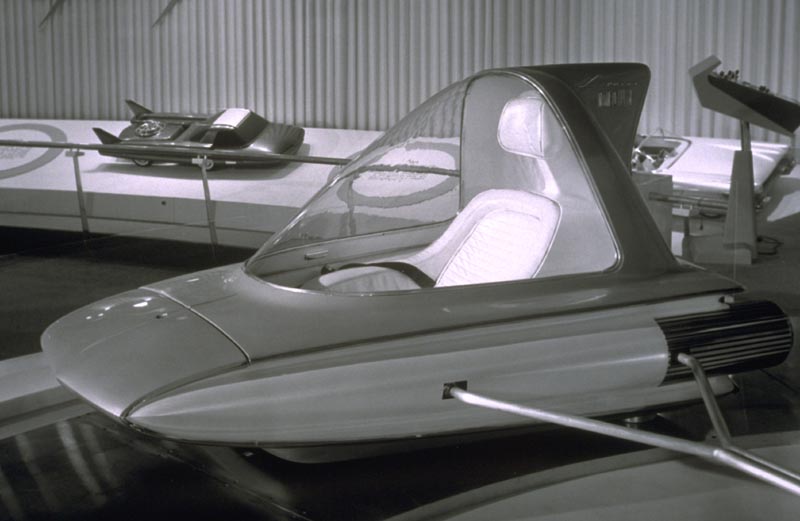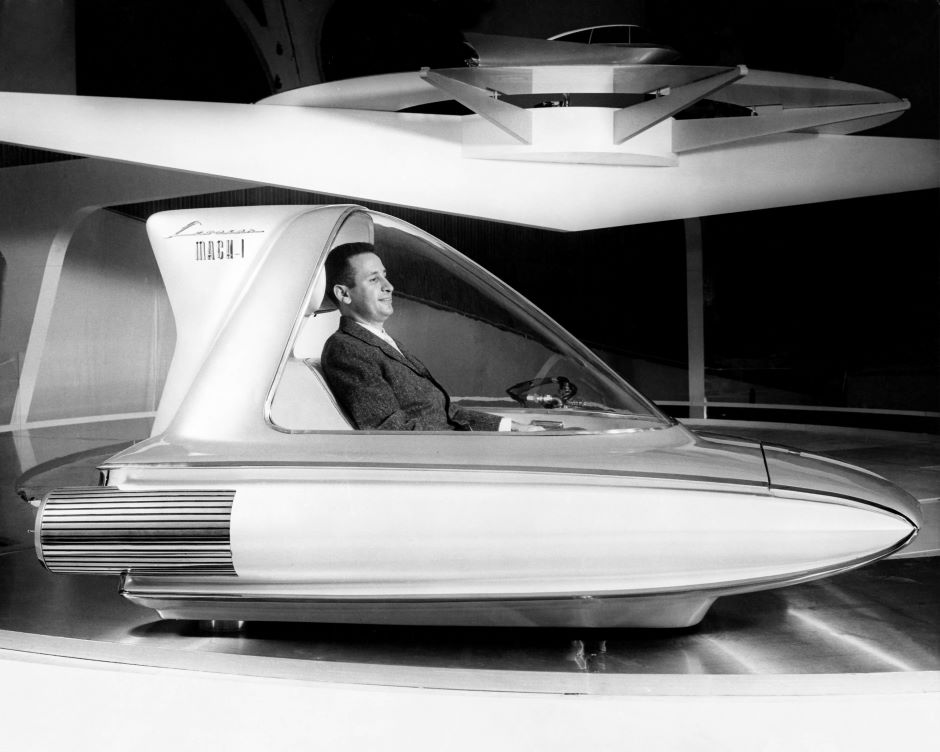In the late 1950s, public transport in the US was a multi-billion-dollar industry being eclipsed by a rise in private car ownership that saw a fifth of all households owning more than one car.
By 1960, the US automotive market – excluding business and government fleets – was estimated to be worth $36bn, a figure broken down into $16bn on car purchases and $20bn on maintenance and operation.
By comparison, the market for public transport – incorporating airlines and taxis as well as buses and trains – was worth $3bn and Ford Motor Company was working on a project designed to take a share of the spoils by connecting cities at speed.

The idea was, in fact, 30 years-old when it was presented to an audience at the Institution of Mechanical Engineers by a certain Mr VG Raviolo, Ford’s executive director of engineering staff. By that time, the concept of the Ford Levacar – a wheel-less vehicle supported on a thin film of air – was out of the lab and operating as a single-passenger vehicle on a circular track that was 28ft in diameter.
According to our correspondent, Levacar was envisioned as a 40 to 60 passenger vehicle operating at speeds of about 300mph.
“In this form it would provide a high-speed public transport system which would fill the gap between wheeled vehicles and high-speed aircraft, operating directly between city centres at intermediate distances of up to 1,000 miles,” said The Engineer.
In his presentation, Raviolo told IMechE that a working system would likely consist of two rails supported several feet off the ground and that commercially available degrees of finish and tolerances were up to the job. The supporting cushion of air – between the faces of the ‘levapads’ and track surfaces – was estimated to be between 0.02 and 0.05 inches.
In experiments, air was supplied at 50 to 60lb per square inch to a 450lb Levacar that required 15hp for levitation and 2.5hp to propel it at 20mph. The Engineer recorded that in the case of a larger vehicle, 25hp would be required per 1,000lb of gross vehicle weight “so that a 40-passenger model with an estimated gross weight of 28,000lb would require 700hp for levitation”.
“The energy required for levitation remains substantially constant while the forward speed of the vehicle increases, but the air drag rises rapidly, of course,” said our correspondent. “Thus, to move the same 40-passenger vehicle at 200mph would require an additional 320hp and at 400mph, 2560hp. Consequently, the proportion of energy absorbed in levitation decreases substantially with speed, and the Levacar is seen to be most efficient at high speeds.”

Certain elements of Levacar were still in development and Raviolo couldn’t reveal too much about the vehicle’s aerodynamics, except to say that drag and side winds would be countered by “selective air feed to the multiple levapads”. Propulsion, however, would be delivered by a shrouded propeller with a low tip speed to reduce noise.
“The question of noise is particularly important if such vehicles are intended to operate to and from the centres of cities: according to the speaker, the noise level of a Levacar would be comparable to that of an express train at 80mph,” The Engineer said.
It was further added that to be economical, Levacars would have to operate above 125mph – preferably between 200 to 500mph – leading to questions about braking safely at speed. According to Raviolo, the Levacar would be brought to rest by a combination of reversed propeller thrust and air brakes or flaps, followed from 30 or 40mph by the application of bellows-actuated pads lined with brake material.
“In the event of engine failure, the vehicle would have to rely on the brake pads, which were thought to be adequate dealing with such emergencies, but this still had to be proved in full scale tests,” The Engineer said.
History has told us that Levacar failed to come to fruition, although in 1960 Raviolo was confident that the cost of the system – including land clearance but not acquisition of rights of way – would be approximately $75,000 per mile.
“The possibility of direct high-speed travel between the centres of cities is attractive but the economics of the proposed system call for further, more detailed examination,” concluded The Engineer.




Poll: Should the UK’s railways be renationalised?
Rail passenger numbers declined from 1.27 million in 1946 to 735,000 in 1994 a fall of 42% over 49 years. In 2019 the last pre-Covid year the number...